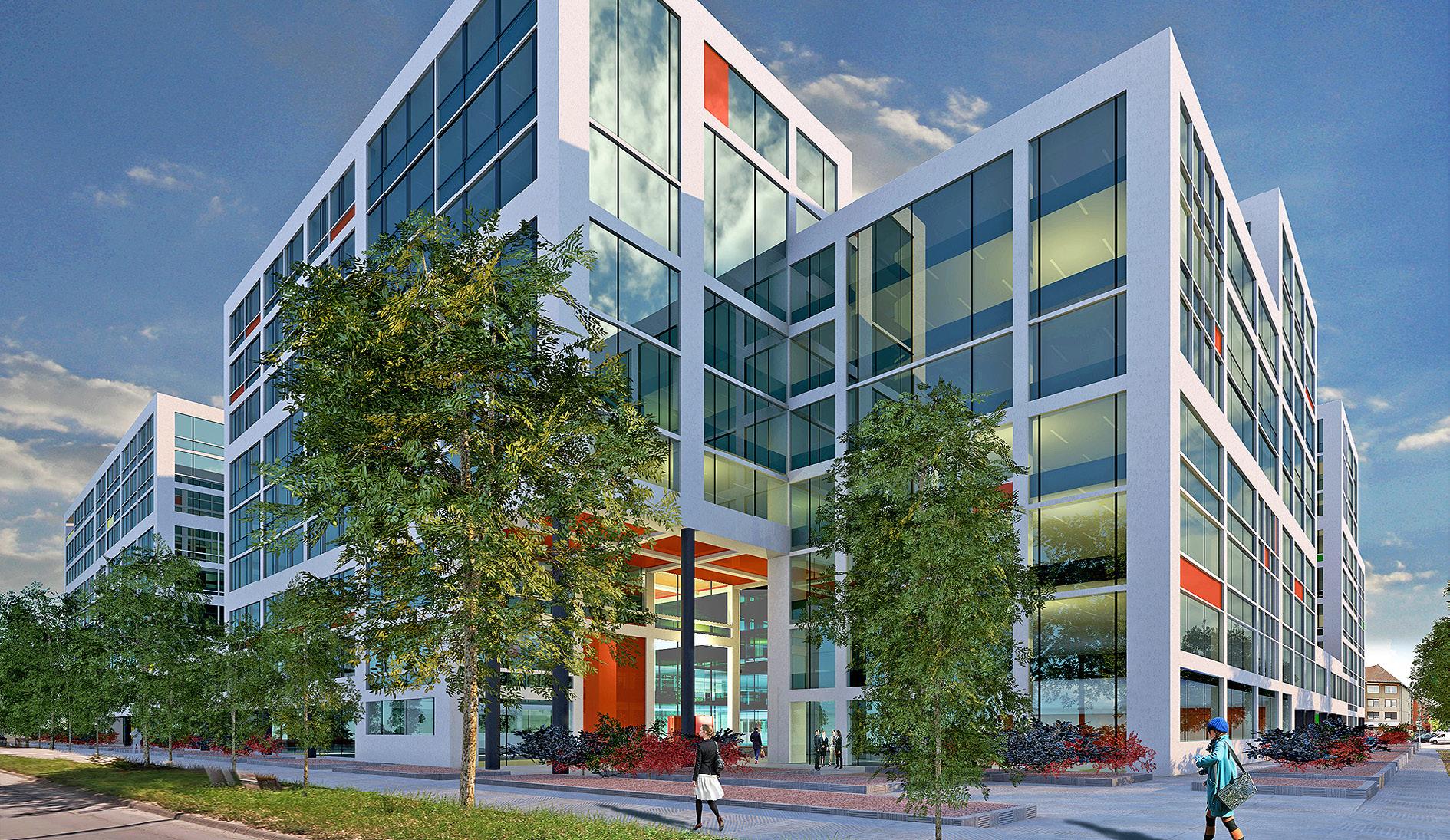
4 minute read
Construction Projects Going Ahead Despite Emergency Situation
The number of cranes around the city provides evidence that construction work is ongoing at development projects despite the lockdown situation. Rising construction costs and the scarcity of labor have been seen as major obstacles to development and, therefore, market growth across the different private and public property sectors.
By Gary J. Morrell
Many construction workers had been taking advantage of the considerably higher salaries they can earn in Northern Europe. The construction industry now faces further challenges with further safety and hygiene regulations that have been imposed due to the COVID-19 virus. Developers are reporting that projects are going ahead as scheduled, although there are some delays in the permitting process and the delivery of materials from abroad, due to the lockdown.
“Fortunately, the current pandemic situation did not result in any delay of our office projects, neither building-wise nor leased premises wise,” says Nikolett Püschl, leasing and development director at Atenor Hungary. “By the time of the start of the lockdown, we had already achieved a very advanced status in all of three ongoing constructions. On the one hand all materials were already in place, furthermore our development strategy, of not using a general contractor but working with subcontractors who are fully managed by our in-house project managers, proved to be the most secure and professional choice in this case as well,” Püschl adds.
Building “A”, the first at the Aréna Business campus, has been completed and received its occupancy permit. The handover of the 21,000 sqm office building met the deadline of the original schedule. In parallel, the construction of the second,
Libery office project, under construction by Wing.
Building “B” is in full swing and should be completed by the second quarter of 2021.
“Aréna Business Campus Building “A” and Buildings “E” and “F” in Váci Greens are being built continuously. We introduced the strictest health and hygiene procedures; obviously, we try to give everything to the contractors who work for us according to their requests. Of course it is one’s own decision whether they wish to work further on the site; for now, I can report that contractors perform their contracted commitments to nearly 95%, which is very good news,” she says.
SAFETY MEASURES
As with other areas of the economy developers have to conform to additional safety and hygiene measures due to the coronavirus. “During lockdown, certain official procedures slowed and we also experienced minor labor shortage as many foreign workers decided to return home,” Skanska reports.
“Building material flow also slowed down as outputs were reduced and delivery times were growing. Nowadays, the situation appears to have stabilized. Nevertheless, social distancing, face masks, hand sanitizing stations and other
Aréna Business Campus by Atenor.

precautions are the new normal for the industry,” said Skanska. The certification systems put great emphasis on the communication of the safety measures within the buildings and at the construction sites, by implementing signage and promoting policies, training and mental support for employees according to Edina Hornok, head of sustainability consultancy at DVM.
The signs are that the development cycles are at their peak and more than 60% of the 300 construction and development professionals at the “Portfolio Construction Industry 2020” conference at the New York Palace hotel expected construction activity growth to stagnate. At the same time, the overall view was that industry has to adapt to the changing needs of tenants, building occupants and environmental regulations and improve its productivity so that projects can be completed on schedule.
With regard to sustainability, the construction industry requires a certain percentage of renewables that have to be integrated into a project according to Zsombor Barta, president of the Hungarian Green building council (HuGBC).
DIFFERENT THINKING
“This will require a different way of thinking on the part of developers as the range of renewables they can calculate with is also limited in an urban area like Budapest. These are huge issues as developers have to rethink their whole developments from a design and building engineering perspective if it is located in, for example, an area where district heating is not available and you can no longer count solar-gain within the calculation of renewables for a project. This will have a major impact on developers as they and designers are now being pushed to think in more innovative and more energy efficient ways,” he says.
From the perspective of a developer, Tibor Tatár, commercial and retail development manager at Futureal Group, comments that the challenge facing developers over the last three years has been deadlines and quality.
“We do not expect a fall in construction costs but a major step forward would be an improvement in construction quality and the keeping of deadlines. These are the most important issues for the industry,” he says.
He thinks that, in the medium-term, the construction industry has to not only think about quality but also shortening deadlines.
“This is the main challenge for the next four to five years. Fortunately, an increase in rentals came at the same time as the increase in construction costs and there was space for an increase in rentals as Hungary has the cheapest in Central Europe, 25% cheaper than the Czech Republic and Poland. For a 20,000 sqm office project the construction time is two to twoand-a-quarter years; this is too long and should be one-and-a-half to one-andthree-quarter years,” Tatár concludes.










